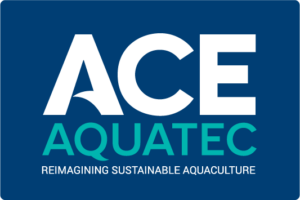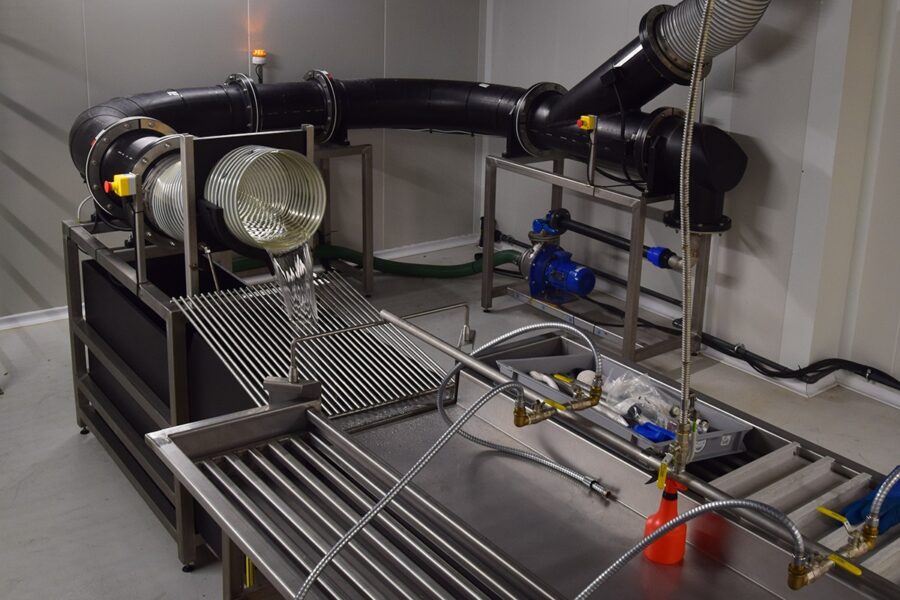With a third round of applications underway, Fishing News is taking a closer look at some of the projects already supported by the UK Seafood Innovation Fund (SIF). This week, Ace Aquatec describes its project to develop a humane automated stunning and bleeding system for wild and farmed fish

Globally, fish are the most consumed protein source, and with a projected population set to hit 8.5bn by 2030, there has never been a greater need for it.
The source of this protein has diversified with the advent of aquaculture, which now produces as much fish tonnage as wild catch. However, wild catch continues to play a significant part in fulfilling our global protein requirement as our population increases.
Recent focus on humane slaughter in aquaculture production has drawn attention to those organisations that have not kept up with the EU regulations on fish and crustacean slaughter. In 2012, CO2 as a method of killing fish was banned, and adoption of humane slaughter techniques was regulated to avoid circumstances where fish were harvested in ice, or left in air, a practice which is banned on land.
As we look to our oceans for significant portions of our protein, Ace Aquatec has developed the tools needed to avoid the unnecessary suffering of fish during capture. In addition to in-water stunning with electricity, we received Seafood Innovation Funding to develop an automated bleeding system for fish.
This innovation provides large-scale fishing fleets with a means to stun and bleed fish of all shapes and sizes, electrically, in water, with 100% guaranteed efficacy. After stunning, the fish are delivered to a high-power waterjet controlled by structured light cameras guiding robotic arms.
The high-powered bleeding system for salmon and other finfish replaces traditional blades with jets of water, reducing fish handling and improving efficiency and animal welfare.
This development addresses one of the biggest issues currently seen in processing factories – namely a variability in efficacy of stunning and bleeding due to different sizes of fish.
“In mechanical stunners, every fish that goes through has to be carefully aligned with the bolt and then the knife,” said Ace Aquatec CEO Nathan Pyne- Carter. “But not all fish are the same size at harvest. If the machine has been calibrated for, say, 3kg fish, those that are bigger or smaller will not be hit in the right place, so they are not bled properly.
“With the Ace system, fish up to 15kg can be identified and the precise location of the aorta determined to create a cut that is the right depth and location to ensure the fish is killed while it is unconscious. This improves hygiene, as no cutting components touch the fish. And by using a camera and robotic arm to automatically locate any size of fish and reposition them, the machine is calibrated without human intervention, significantly reducing downtime.”
While these systems are geared towards large fishing fleets, ideally adopting seine or purse nets with pumping, Ace Aquatec is in the process of adapting the technology to cater for small fishing vessels with limited power and space.
“We’re currently designing a small, cost-effective batch stunner to provide a means for a small fishing vessel to stun individual fish,” said Nathan Pyne-Carter. “Our aim is to achieve zero handling of fish from net to boat to processing factory. The adapted stunning system benefits from electronics that we developed to be as flexible as possible to cater for different water types and fish types.
“At the moment, we are devising testing protocols around validating stun fields and mechanisms (for delivery in, through and out of the system), so we can determine exact parameters that produce the best insensibility, quality and shelf life for a particular species.
“For us, having credible academic validation is vital because it provides supermarkets and industrial producers with the empirical evidence they need to push for more modern technology that improves quality, leads to more efficiencies, results in cost savings, and ultimately raises welfare standards and expectations around humane fish slaughter.”
These systems can be applied universally to crustaceans and cephalopods, as well as to all aquaculture and wild-catch species.
“We are very excited to introduce these new technologies to the market, and expect them to start to appear alongside our electric stunners, on vessels, in processing factories and in RAS farms over the coming year,” said Nathan Pyne-Carter.
If you would like to find out more, click here.
How to apply
The third UK Seafood Innovation Fund (SIF) call is open for feasibility studies (maximum five months, £50,000 funding). SIF is administered by the Centre for Environment, Fisheries and Aquaculture Science (CEFAS) on behalf of the Department for Environment, Food and Rural Affairs (DEFRA).
Organisations of any size or type can apply. Collaborative partnerships are encouraged, and project teams should include all relevant expertise to deliver a successful project outcome. Stakeholders set to benefit from the proposed solution should be included in the wider team, whether these are retailers, regulatory bodies, or those working directly in the seafood industries.
Feasibility studies with a successful outcome will have the opportunity to compete for an extended research and development phase to fully develop their idea.
So if you have an innovative idea that has the potential to deliver something that has never been done before and solve some of the biggest challenges to the sector, here’s how to apply:
- Read the FAQs here.
- Register at the DEFRA procurement portal here.
- Search for the opportunity page: CEFAS21-90 Seafood Innovation Fund
- Download and read the call documentation pack
- Complete your application form (and obtain the relevant supporting information)
- Submit your completed application before midday on 7 January, 2022.
Please note: the deadline for submission of an Expression of Interest to obtain feedback has now passed, but this does not affect your eligibility to apply.
This story was taken from the latest issue of Fishing News. For more up-to-date and in-depth reports on the UK and Irish commercial fishing sector, subscribe to Fishing News here or buy the latest single issue for just £3.30 here.









